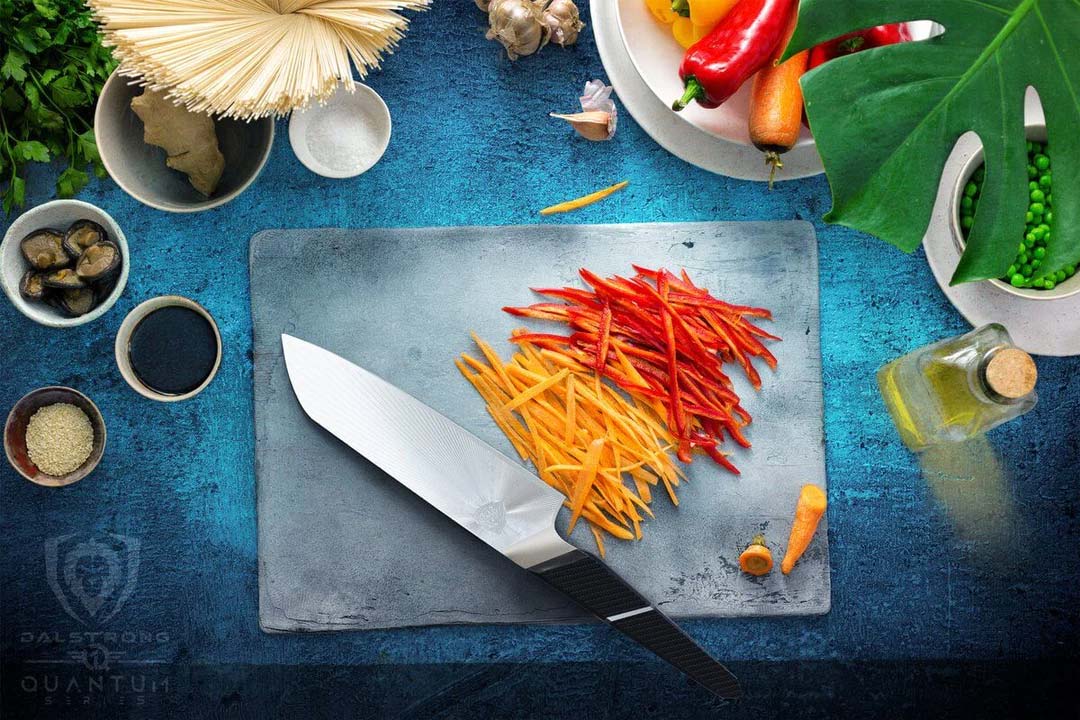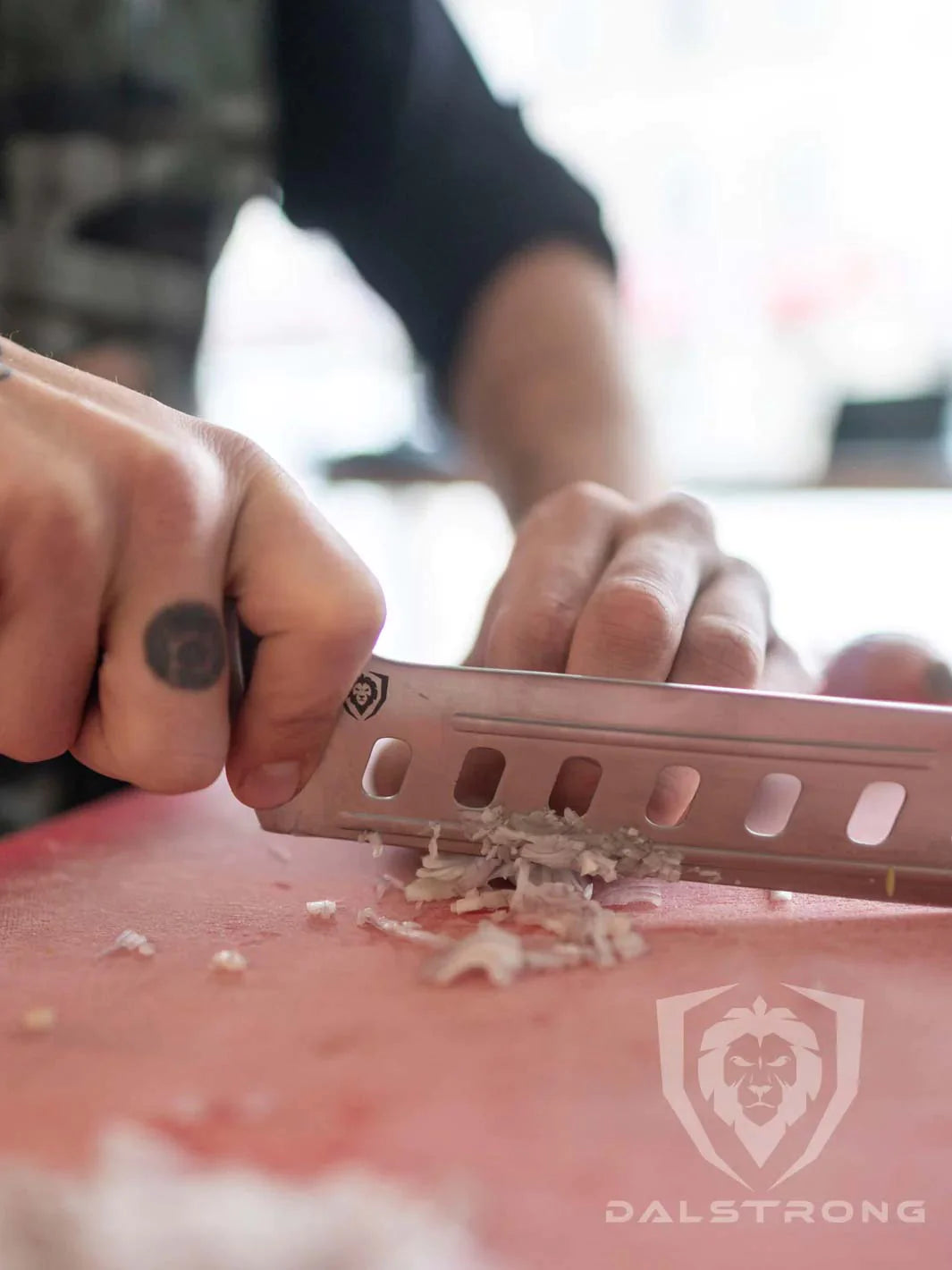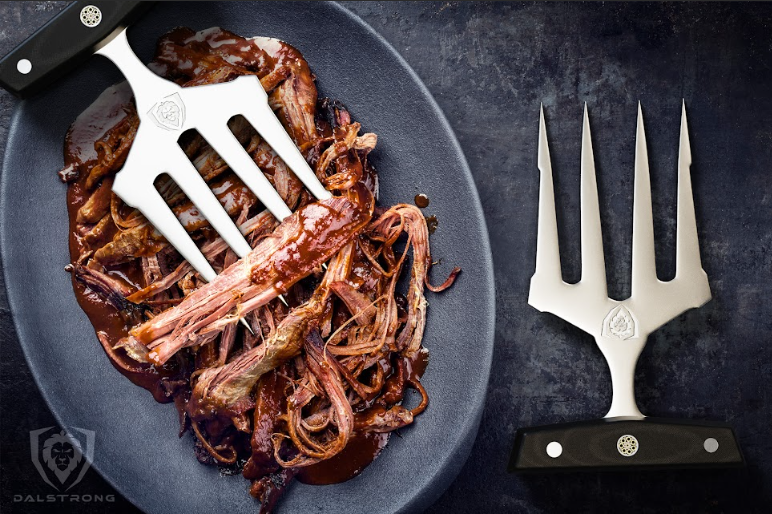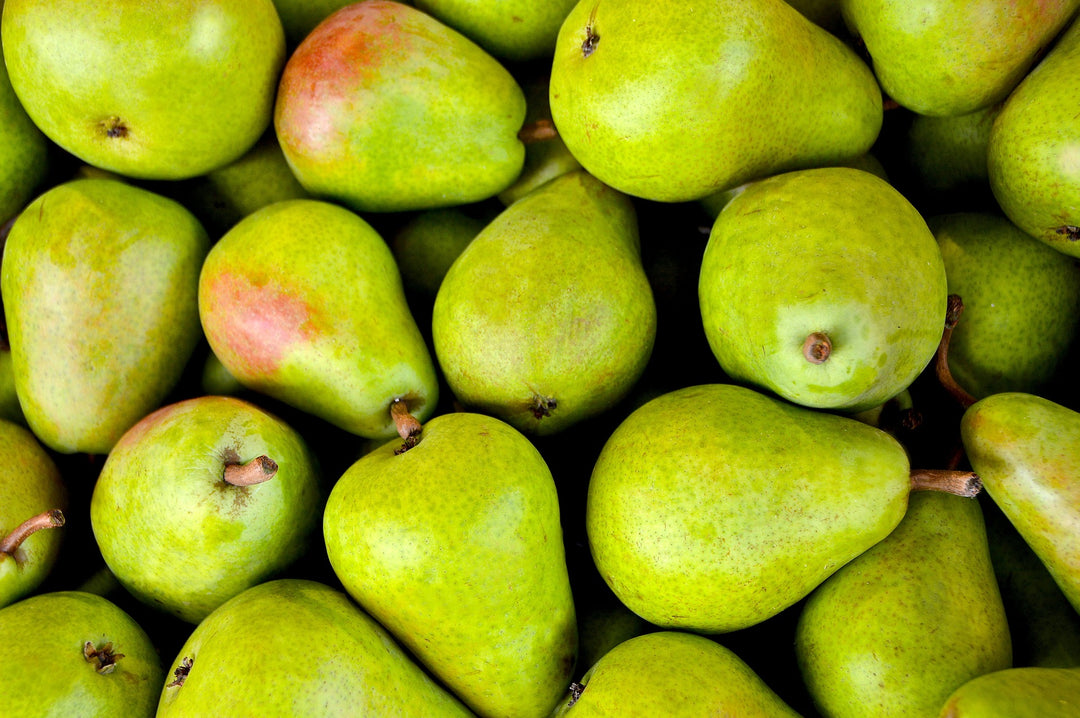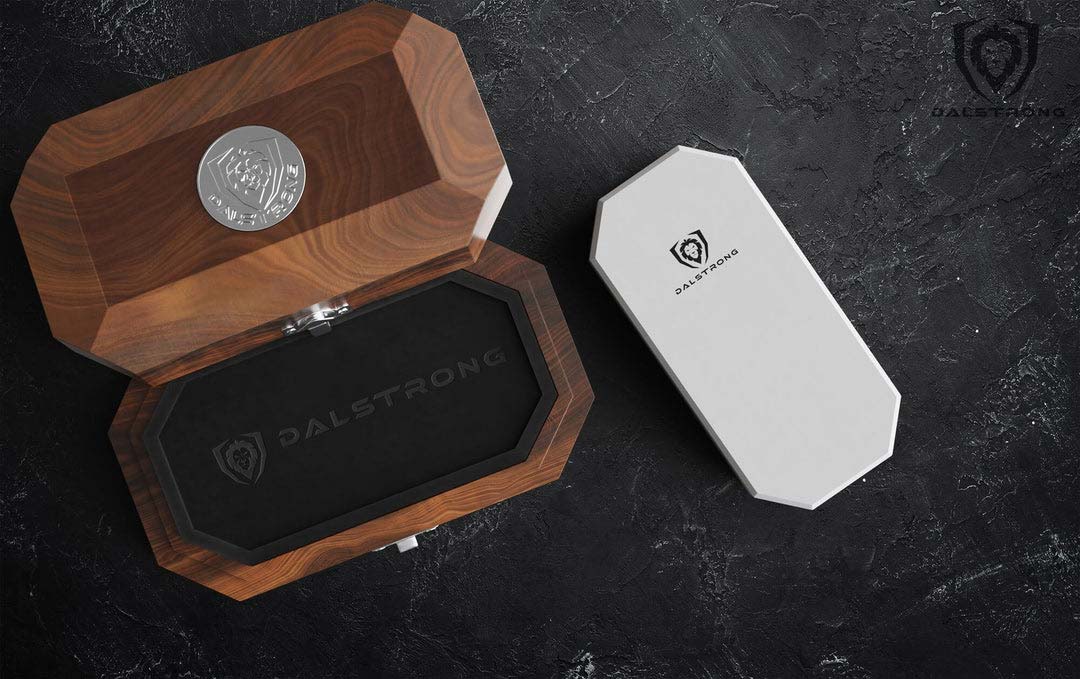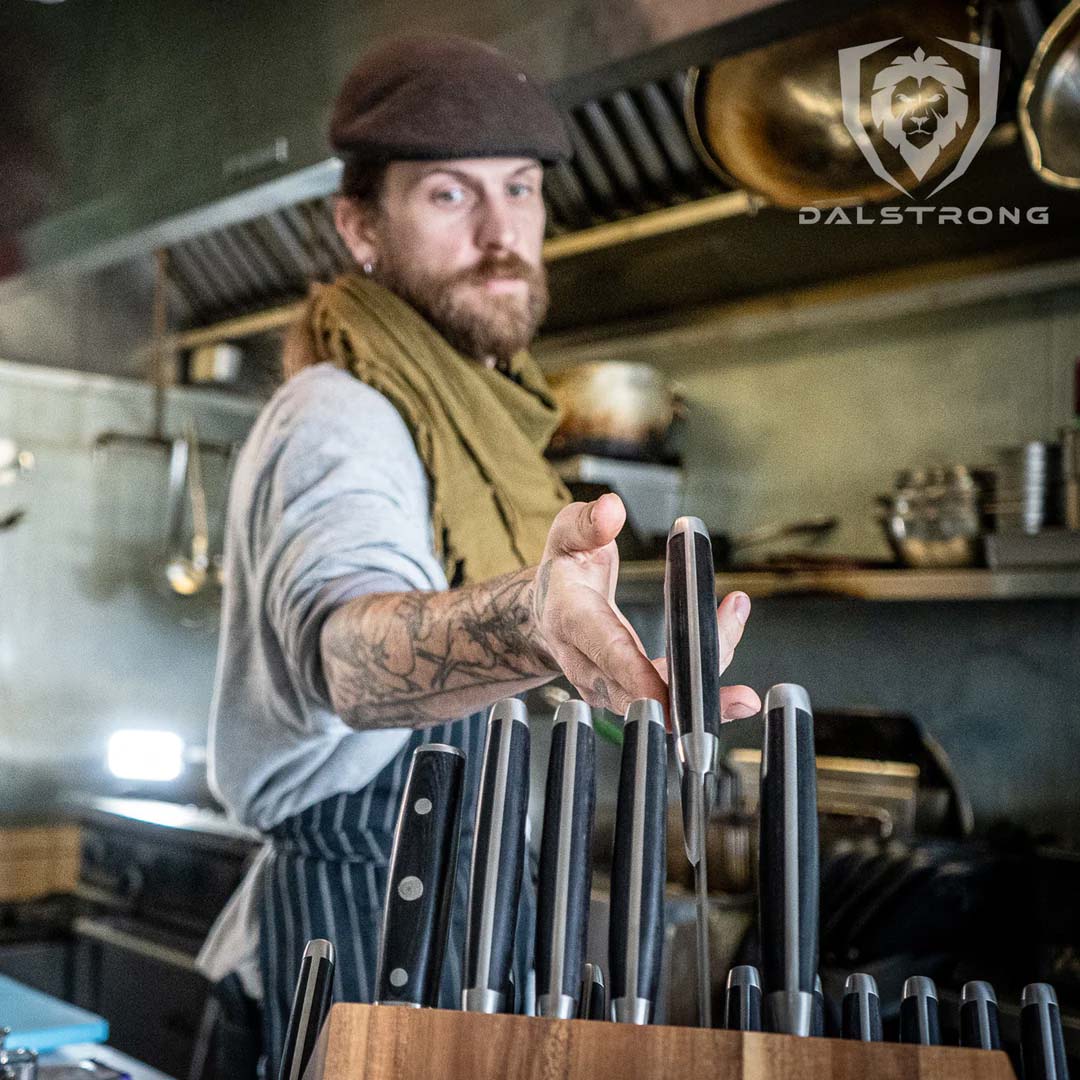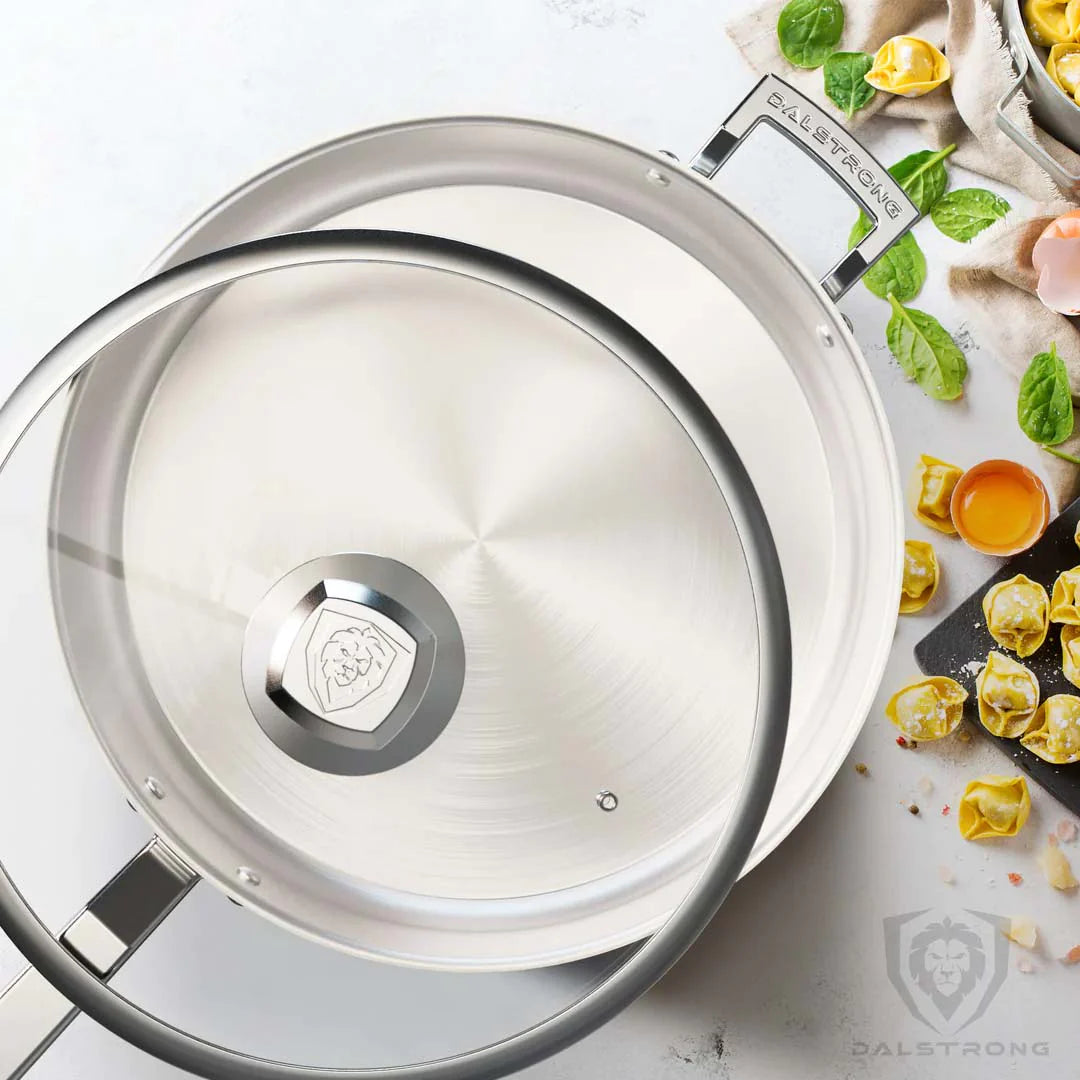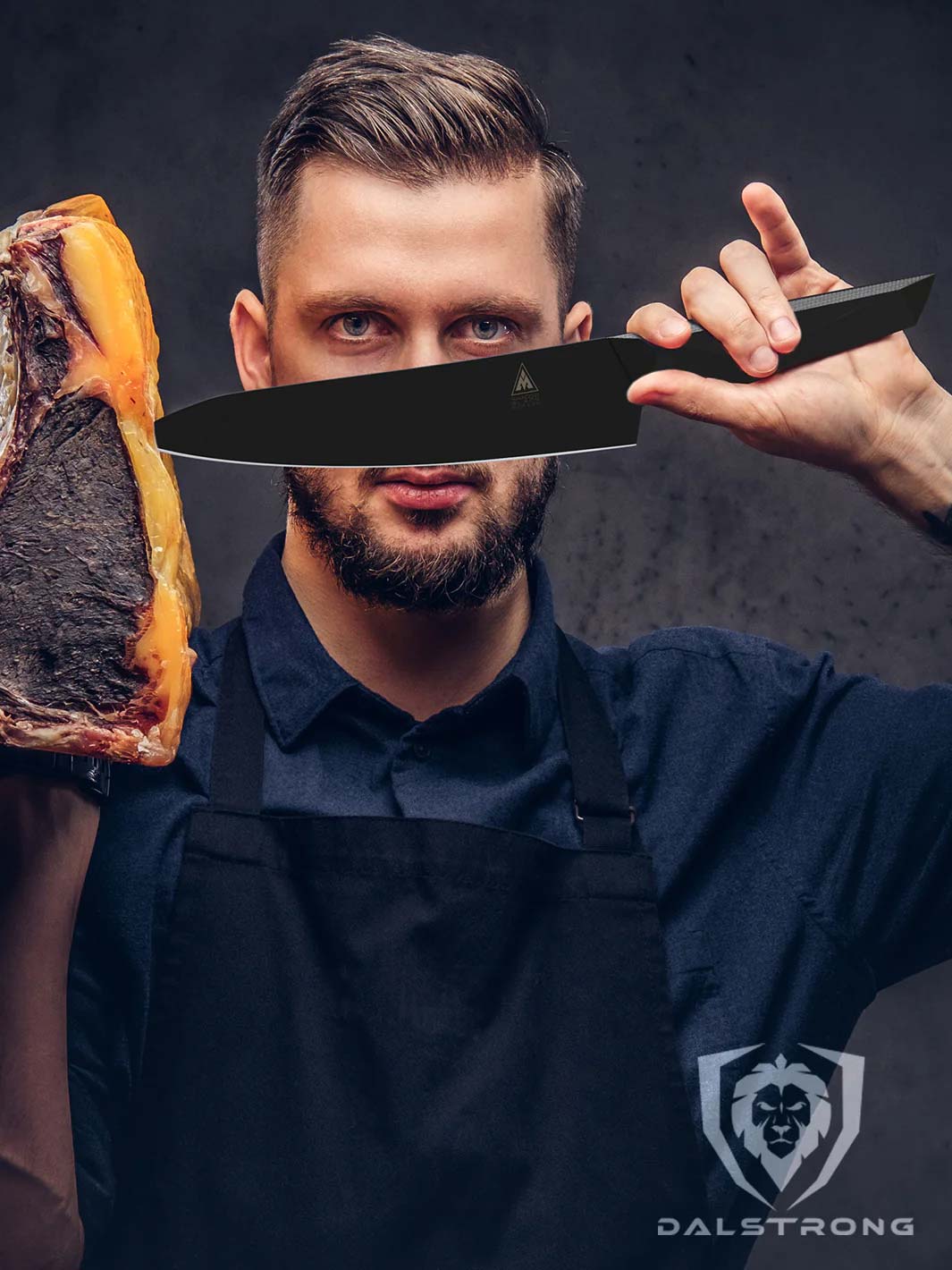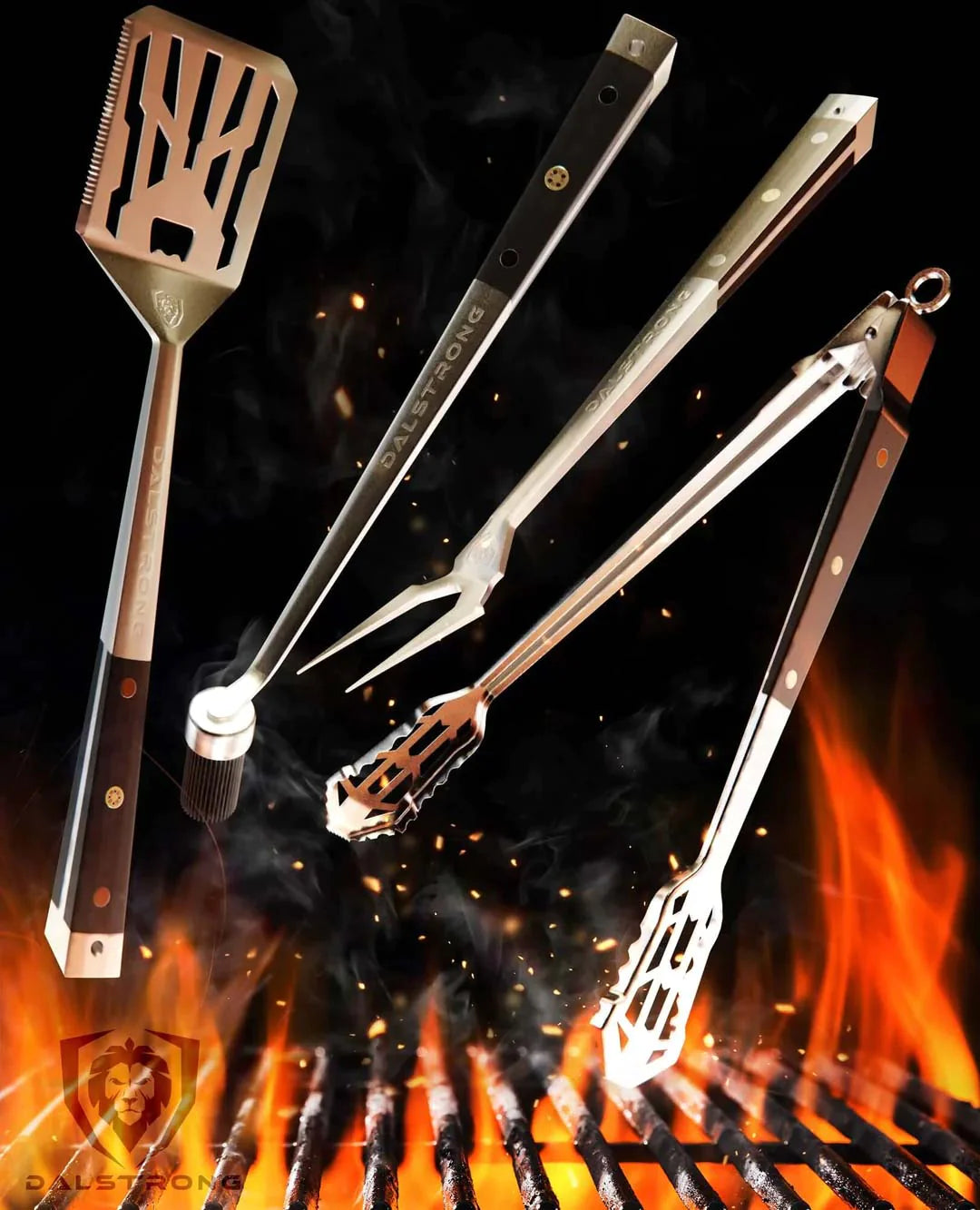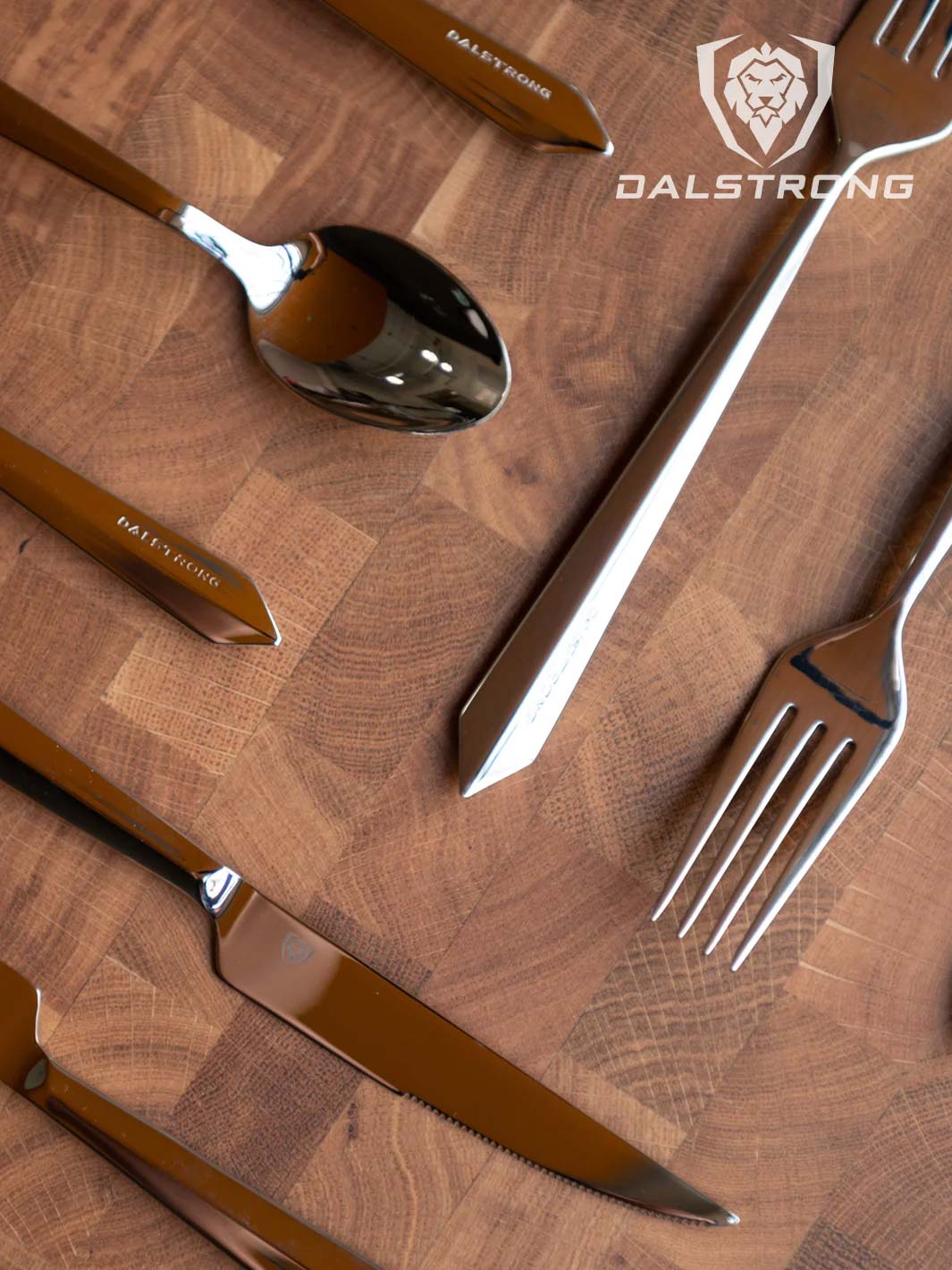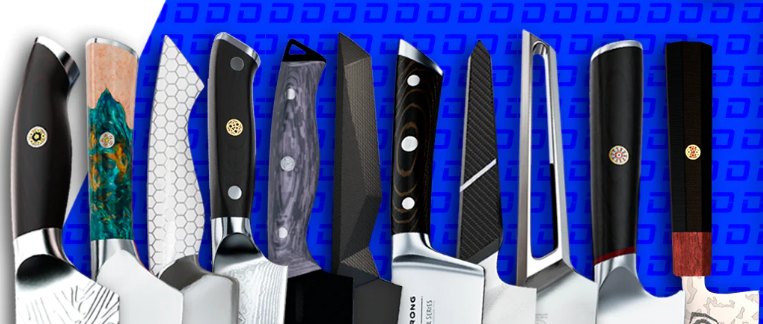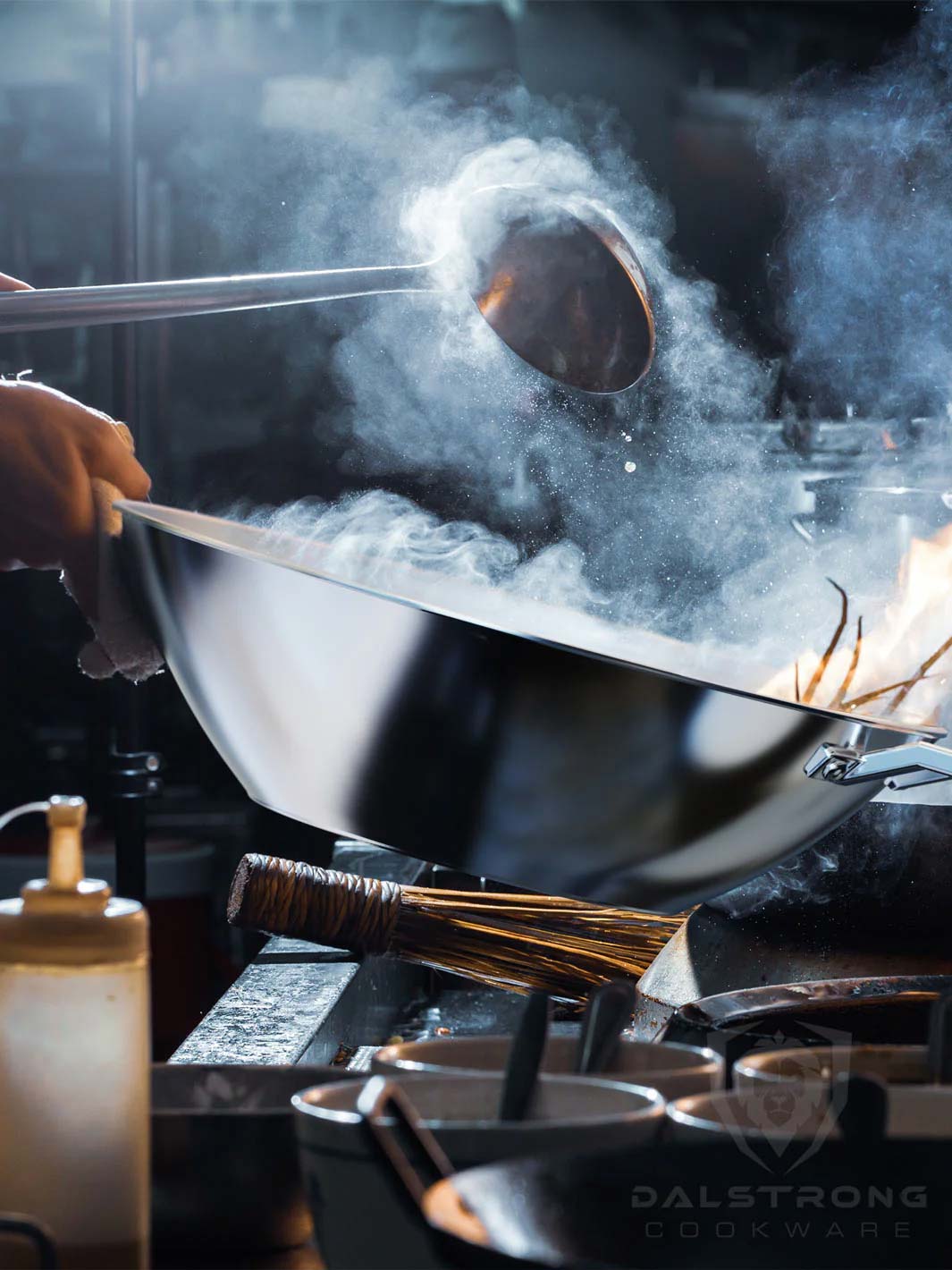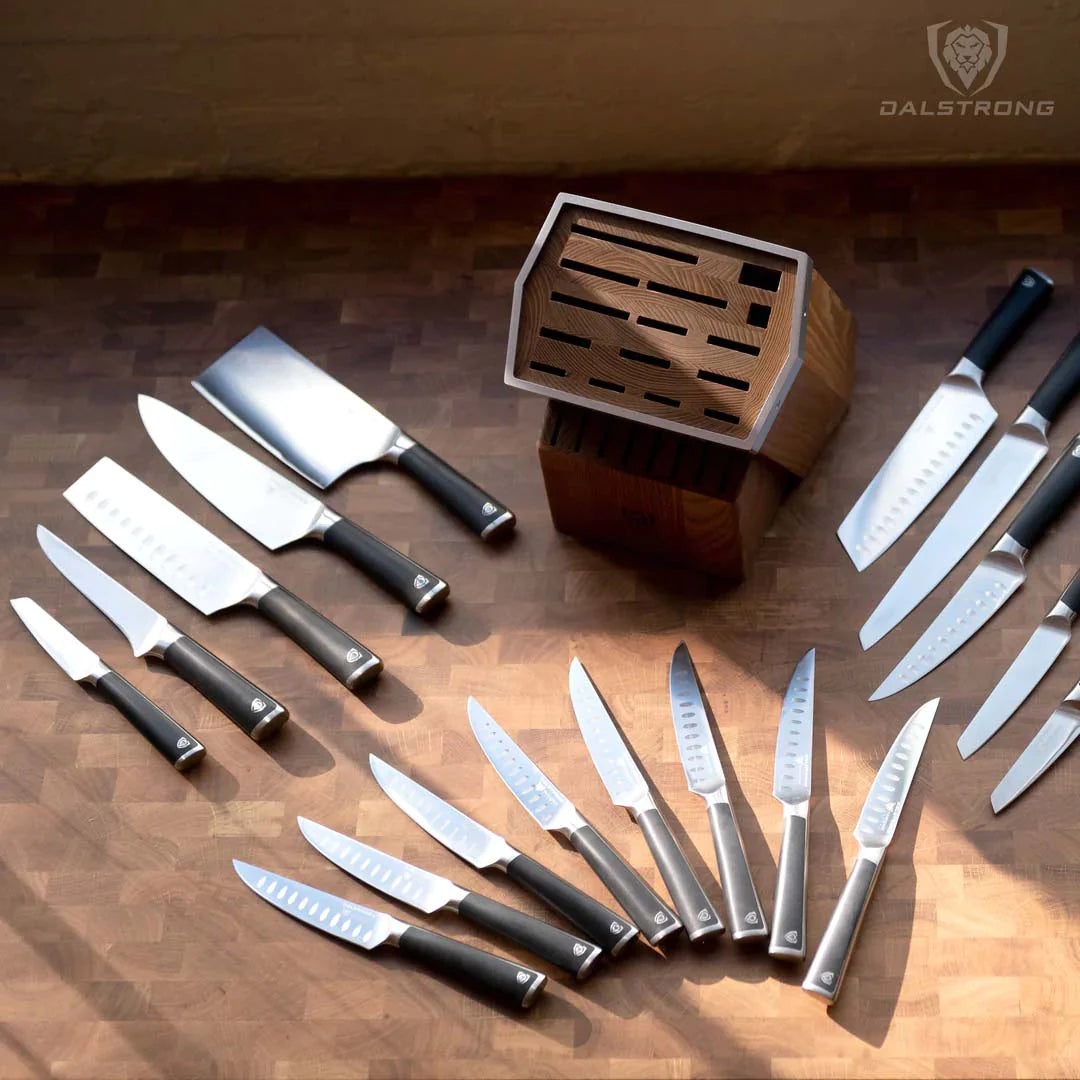A Guide To Cutting Board Oil

A Guide To Cutting Board Oil
Top Wood Cutting Boards for you:
- Corner Cutting Board - Teak Wood
- Lionswood Colossal | Teak Cutting Board
- End Grain Teak Cutting Board
- Teak Cutting Board | Large Size | Horizontal Grain
- Teak Cutting Board | Medium Size
- Infinity Series | Fibre Cutting Board | Large
- Infinity Series | Fibre Cutting Board | Medium
Many people, including professional chefs, would say that a good chef’s knife is their favorite piece in their kitchen arsenal but the truth is that a good knife is nothing without a good board to use it on. For me, my wooden cutting board is one of the most used and beloved tools in my kitchen.
A good board doesn't need a lot of cutting board maintenance. All you need to do is ensure that it is washed properly after each use and condition it every once in a while. Let’s take a deeper look at how you can maintain your cutting board’s condition and enhance its durability.
1. Why You Should Oil Your Cutting Board

Any unvarnished wood items in your kitchen need to be conditioned so that they remain in prime condition. Cutting boards are one of the most essential kitchen items and you need to take care of them. When you want to treat your cutting board, oiling them is the simplest way.
You must always keep in mind that cutting boards that are not oiled will dry out, leading to warping and cracks, especially with the seams that have pieces of wood joined together. Oiling your cutting board will prevent it from drying out and from absorbing any undesirable smells.
However, when you use oils of low quality, it reduced the absorption of food flavors and water. Worse still, it prevents the build-up of oil, which makes the cutting board sticky. The best oil will keep the cutting board plum and well-protected even after multiple uses.
A well-oiled board will not stain if you splash wine on it and will not rot if it is exposed to water for a prolonged period. Preparing your wooden cutting board is an important step in your usual kitchen routine. You will need to oil the cutting board as often as possible, whenever it looks dry.
It’s easy to determine that your cutting board is dry because you will be able to see it from its appearance or you can sprinkle a few drops of water and see if the wood of the cutting board absorbs the water. If that’s the case, you probably need to consider oiling your cutting board.
While most cutting boards come already well-oiled, the oil coating starts to wear off as you use and wash them. This is why they need to be reconditioned by applying oil onto them.
While you could go with a plastic cutting board, plastic boards can break and warp easily. Having to just oil and maintain your board is more cost-effective than continuously buying plastic boards.
Now that you know why oiling your wooden cutting board is such an important part of your kitchen, let’s take a look at the types of woods used to produce cutting boards.
Learn how to properly season and maintain your wooden cutting boards with this detailed guide from Serious Eats.
2. Types Of Wood Used For Cutting Boards

Cutting boards can be made in a range of hardwood types.
Pro chefs swear by wood, not only because it’s more impact-resistant and sanitary than plastic but is also gentler on knife blade than bamboo and cheaper than marble or granite. But not all types of wood are superior options. Some popularly used wood types for cutting boards are maple, beech, teak, and walnut.
When buying a cutting board for your home kitchen, know that certain wood species handle the chore of chopping better than others. Keeping this in mind, I would recommend you invest in a strong and dependable teak cutting board. Let’s take a look at why teak and what makes it the best cutting board material.
In the last few years, teak cutting boards have made their way onto many a kitchen aficionado’s “must-have” list. Known as being a durable natural wood, teak has commonly been used in wet environments such as boat fixtures, outdoor furniture, or spa benches. What gives teak its water-resistive properties is a combination of natural wood oils, tight wood grain, and tensile strength.
While other hardwoods like cherry, maple, and walnut need to have oils applied to keep water out, teak is one wood that retains its natural oils even after being processed.
Visually, teak wood is quite beautiful, with a medium brown color tinged with gold and orange hues. The grain is sharp, fitted, and uniform in texture, making it very appealing for modern applications or design.
So, if you like natural woods, teak will suit your tastes just fine.
3. Oils Used on Cutting Boards

If you have heard of wooden cutting boards and their popularity amongst home and professional chefs, you may have also heard that maintaining a wood cutting board is different from how you would clean a glass or plastic one. Today, in the article we will explore the best possible ways to care for wooden cutting boards and what types of oils you may use to condition them.
Wood is porous, which means that even though it is hard to see, it absorbs water and other liquids you might spill on it. A buildup of liquid in a wood cutting board has several consequences.
Wood that expands and contracts to accommodate moisture will warp or develop cracks over time. Any damp environment also has the possibility of growing mold and other bacteria. Therefore you need to look after the cutting board so it does not absorb water.
However, the chances of anything you put on a cutting board ending up in your food are very high, which is why you must be careful about what you use to maintain your cutting board. Here are some substances you can use safely on a wood cutting board.
Mineral Oil
This is an important ingredient when it comes to caring for a wooden cutting board. It works well to repel water, preventing the wood from absorbing unwanted liquids. But you need to be aware of what kind you buy as a bunch of oils are labeled “mineral oil”.
What you’re looking for is liquid paraffin, also called food grade mineral oil that is safe to digest. This odorless substance does not have any flavor and has a long shelf life.
How to use:
To condition your wooden cutting board, apply a generous amount of mineral oil to your cutting board with a damp cloth. In 2-4 hours, the wood will absorb the oil. Then, wipe off what is not absorbed with a cloth or paper towel. I recommend repeating this process monthly or whenever your board starts looking and feeling dry.
Coconut oil
Another great substance for maintaining your wood cutting board is fractioned coconut oil. This is the oil that is left after fat has been removed from regular coconut oil. Remember, this is different from the type of oil found in grocery stores. Like mineral oil, coconut oil fills the pores of the wood and keeps it moisturized, preventing it from absorbing bacteria or cracking.
How to use:
Take a teaspoon of coconut oil and spread it on the wood's surface of the cutting board. Rub it in with your hand in line with the grain. Repeat this three or four times and then let the cutting board dry for about six hours. Do this monthly or whenever the board looks dry.
Beeswax
Beeswax also does the job of moisturizing wood cutting boards and giving them a nice shine. This substance is food grade and water-resistant. Using beeswax regularly can make your cutting board look new and fresh for a long time.
Because beeswax is solid, it is harder for wood to absorb it. Combining it with oil makes it easier to use and adds the oil’s benefits to the mix.
- Adding beeswax to mineral oil enhances its water resistance.
- Combining it with coconut oil seal in the hydration.
How to use:
To condition your cutting board with beeswax, mix it with another oil and warm it. If you use mineral oil, the mixture should contain twice as much oil as the beeswax.
The coconut oil mixture needs four times the coconut oil as beeswax.
Take two tablespoons of the mixture at a time and rub it into the cutting board along the grain. Let the cutting board stand for 4-6 hours and then wipe off the excess.
Carnauba
Popularly known as Brazil wax, this is derived from the leaves of a palm tree native to Brazil. Sometimes called the “queen of waxes”, carnauba is known for its glossy finish and water resistance properties.
The wax does such a wonderful job that it is often used in automobile waxes, polished, cosmetics, and even dental floss. Like beeswax, commercially available cutting board creams and oils often contain a mixture of carnauba, beeswax, and mineral oil.
Lemon Juice and Baking Soda
This final alternative is a combination of 2 non-oil ingredients, lemon juice, and baking soda. They serve the same purpose and can work wonderfully if you don’t have oil or run out of it. Both these ingredients help in removing stains and odors from wood.
How to use:
Put a few drops of lemon juice and baking soda and rub it in with a warm cloth or sponge. Rinse and dry the board. Lemon juice can also be added to other oils to keep your cutting board smelling as fresh as ever.
Remember: You should not use any type of cooking oil on your board such as olive oil, vegetable oil, or regular coconut oil because they will go rancid. Also, keep in mind that excess moisture is bad for wood. Never soak your cutting board or let it sit in water for a long period.
4. How To Maintain A Wood Cutting Board
If you are planning on purchasing a teak wood cutting board for your kitchen, here are some things you would want to keep in mind. The greatest beauty of teak wood is that it is virtually maintenance-free. While outdoor, teak will turn a silvery gray color, left inside out of UV exposure, your cutting board should have no issue preserving its color.
While you should always wash and disinfect your cutting board after each use here are some things to keep in mind when cleaning your wood cutting board.
- Always hand wash and pat dry the wood cutting board with a towel before letting it air dry. Avoid exposing the board to too much water, as the wood will swell up and warp.
- Store your wood cutting board on its side. This helps save storage space.
- Wood can dry out, so you want to regularly oil your board to prevent cracks. There are specific wood oils that you can use, but basic extra-virgin olive oil should also do the trick just fine. I recommend oiling the wood board at least once a month.
- To moisturize the board, you can also use food grade mineral oil, beeswax, or even excess fat after slicing up a nice piece of steak. Be sure to remove any excess oil.
- Do not use old cooking oil to moisturize the cutting board. This will spoil the board and make it smell rancid after some time.
- For spot stains, use a paste of baking soda, salt, and water. This will easily clean stubborn stains on the board.
- For odors, you can use a spritz of white vinegar. This will help break the smell particles on the board.
- Every few months or at least once a year, you should scrub the board down with some coarse salt and finish with a few coats of oil to prevent drying and cracking.
5. Cutting Board Oil Recipe

There are many great butcher block countertops and cutting board oil conditioners you can buy, but making your own is fun and easy.
Here is the recipe for an all-natural wood conditioner that is food safe and great for rejuvenating and maintaining indoor butcher block countertops, wood cutting boards, salad bowls, wooden toys, utensils, etc.
Items you will need:
- Food grade mineral oil. This will act as the base for your conditioner.
- Beeswax or Carnauba wax. This will penetrate into the wood and eliminate dry, dull, moisture, and sun-damaged surfaces.
- Clear measuring cup. This will ensure you combine the accurate quantities of substances.
- Double boiler OR pot with a steamer rack. This will prevent glass jars and lids from breaking.
Directions to make the Cutting Board Oil Conditioner
Step 1: Measure the Ingredients.
- Use a 500ml measuring cup for this step. The goal is to get a 1:8 ratio of wax to oil in volume.
- Pour 400 ml of food grade mineral oil into the cup.
- Add chopped or pellet beeswax slowly until the oil and wax mixture reaches 500 ml. Now we have a wax to oil ratio of 1:4.
- Pour the mixture into a jar and add 400 ml more of mineral oil. This will help you get a ratio of 1:8 of wax to oil.
Step 2: Transfer the mixture and set up a water bath.
- Do NOT place the mixture directly on the heat. Beeswax melts at a temperature of about 146F, which is well below the boiling point of water.
- I suggest you use a double boiler or set up a water bath for this step. To set up a water bath:
- Take a pot and use the jar lids as little racks to lift the jar from the bottom of the pot.
- Fill the pot with water.
- Make sure the water is about halfway below the rim of the jars.
- Place the jars in the water bath.
Note: You can also use a metal container to melt the was oil mixture and pour the mixture into a glass jar when all the ingredients are combined.
Step 3: Melt the mixture.
As the water heats, the ingredients will start to melt in the jar. Stir gently with a spoon or chopstick. In a few minutes, the wax will melt and the mixture will become transparent. When all ingredients are completely melted, turn off the heat and take the jar out of the pot.
Note: Any time you work with flammable materials such as wax and oil, you should be extra careful. Use a deeper pot to prevent the mixture from spilling over. Wear gloves and an apron when moving the hot oil and wax mixture.
Do not touch the mixture with bare hands until it is completely cooled off. The mixture will be opaque after it cools.
How to use:
If you have a brand new, unseasoned cutting board, don’t use this oil wax conditioner yet. First season the wood surface generously with food safe mineral oil.
Use your hands to push the puddles of oil evenly on the board’s surface and allow it to soak overnight. Repeat this process 3-5 times and remove excess oil. Then start using the oil and wax mixture.
If you are using this conditioner on a board you’ve been using for a while, use your hand and spread the mixture evenly over the wood. Again, let it soak overnight or longer, then wipe off the excess with a rag or paper towel.
The longer you can let everything sit and absorb the better. You only need to do this once a month, or as and when the food starts to feel dry. If you regularly oil your board, this oil and wax wood conditioner will create a beautiful, satin sheen finish and the wax will enhance the water-resistance capabilities of the surface.
6. Wood Cutting Board Recommendations
Best End-grain Wood Cutting Boards
1. Lionswood Colossal - Teak Cutting Board
Made with Tropical Teak wood and paired handsomely with satin-finished steel handles, this cutting board functions as your all-purpose chopping, slicing, and serving board. The board made with this luxury wood is meticulously hand-crafted from end-grain wood and filled with rich moisturizing oils that make it naturally resistant to water bacteria and staining.
End-grain fabrication consists of fibrous wood grain in alternating directions which helps to prevent gouging in the board by allowing the wood fibers to spring back easily. These boards are also very simple to maintain.
Pros:
- The unique checkered construction gives the board a slip-resistant surface that absorbs impact like a pro.
- The surface ensures that your knives stay sharp for longer.
- The tight-wood grain ensures a long-lasting hygienic cutting surface making this board ideal in wet environments such as busy professional kitchens.
- The board features a curved cut-out to house a side plate for easy scraping and transferring of ingredients from the cutting board to the pot, pan, serving plate, or for waste.
Cons:
- The board comes with a high price tag that might not be ideal for everyone, especially those who are home chefs or cook occasionally.
- The board is substantial in size. This might result in the board taking up too much counter space in a small kitchen.
- This board is pretty heavy. This might make it difficult for some people to lift it.
2. Dalstrong Teak Cutting Board
This handsome cutting board, sustainably sourced from tropical teak wood is substantial is your all-purpose, go-to cutting board. It has been meticulously hand-crafted from end-grain wood and filled with rich moisturizing oils, teak is recognized as a luxury wood, naturally resistant to water, bacteria, and staining. Featuring two steel handles, this beautiful butcher block can be easily stored above your sink, stove, or tabletop saving you valuable countertop space.
Pros:
- Easy to maintain its hygienic surface
- Keeps your knives razor-sharp
- Beautiful presentation to be used to present anything from cheeses, veggies, charcuterie, and more.
- The underside of the board features a curved cut-out to house a side plate for easy scraping and transferring of ingredients from the cutting board to the pot, pan, serving plate, or for waste.
Cons:
- Lacks the size and mass of the Lionswood model.
- Not dishwasher safe.
Best Space-saving Wood Cutting Board
3. Corner Cutting Board - Teak Wood
Enhance your kitchen with this cleverly engineered Corner Teak Cutting Board. This board is known for its ability to fit snugly into the inner corner of your countertop to assist with everyday chopping and cutting tasks. The material used to make this board is popular for its impressive moisture resistance and durability.
Pros:
- The board comes with a stabilizing corner block that ensures that the board will stay in place while you’re busy with your knife in hand.
- The end-grain fabrication allows the wood fibers to spring back easily after being used for strenuous kitchen tasks.
- The board is hard enough to make sure that you get precise, clean cuts of meat.
- The board is also designed to maintain your knife’s sharpness through use after use.
- The wood comes with natural anti-bacterial properties that ensure a long-lasting hygienic cutting surface.
- The board is very easy to maintain.
Cons:
- The high price of this board might not be digestible by everyone.
- If you’re an amateur in the kitchen, this board can get intimidating to use as it is quite big.
Best Large Sized Wood Cutting Board
4. Teak Cutting Board - Large Size | Horizontal Grain
Made with sustainably sourced Tropical Teak wood, enhance your kitchen with the cutting board, perfectly sized to assist with larger everyday chopping and cutting tasks. The board comes with measurement lines (that are lasered) on the bottom of the board to make this cutting board more useful, allowing you to make precise cuts and slice even lengths of vegetables, cheese, pasta, and more.
Pros:
- The durable and practical kitchen board is ideally sized for larger chopping tasks.
- The wood is hard enough to offer precision for clean cuts.
- The material used to make this board ensures that the board ages like fine wine, looking better as it gets older.
- The lasered measurement lines on the bottom of the board make precise cuts and sectioning simple.
- The board doubles up as a stylish serving tray.
Cons:
- The large size of the board can be a space-eater in a home kitchen.
- The board doesn’t come with handles which could make serving with this slightly uncomfortable.
Best Affordable Wood Cutting Board
5. Teak Cutting Board - Medium Size
Home chefs, we’ve got the perfect board for you. This cutting board by Dalstrong is designed to fit perfectly in home kitchens without taking up too much space. A long juice groove helps messy prep stay on the board and off your counter. Paired with the wood’s naturally hygienic properties, the tight-wood grain ensures a long-lasting hygienic cutting wood surface, ideal for wet environments such as a busy home kitchen or even small professional kitchens.
Pros:
- This board is of just the right size and ideal for average day-to-day chopping tasks.
- The wood helps preserve the sharpness of your knife, making this an ultra-practical kitchen ally.
- The board has a rugged yet elegant design that is just right for your daily prep work.
- This cutting board is easy to clean, use and store.
Cons:
- This board might prove to be small when handling bigger chunks of meats or vegetables.
- The missing handles can make serving with this an uncomfortable task.
Best Fibre Cutting Boards
6. Infinity Series Wood- Fibre Cutting Board - Medium - Obsidian Black
A handcrafted cutting board that can become your versatile workhorse in the kitchen. It is ready to take on any of your chopping, slicing, and dicing needs. It is durable, easy to maintain, and will keep your knife edges razor sharp. Coming in a sleek and sturdy Obsidian Black, it will add toughness and elegance to your kitchen arsenal.
Pros:
- Low-maintenance surface does not absorb water, making it both dishwasher-safe and mold resistant
- Beautiful presentation, and a G-10 serving handle, allow you to move this to the front of the house and serve charcuterie, fruits, cheeses, and more on it
- Durable and lightweight. The scorable surface protects your precious, razor-sharp blades
Cons:
- Not intended for hot surfaces, so you should not put hot pots and pans on it.
- Medium-sized: (9”x11”). Might not be able to handle your bigger chopping and cutting jobs.
7. Infinity Series Wood - Fibre Cutting Board - Large - Obsidian Black
A chef’s best ally in the kitchen. This beautiful wooden board, in obsidian black, is up to handling any of your chopping, dicing, or slicing needs, while adding a touch of sophistication to your countertop and kitchen. Both durable and lightweight, its scorable surface will protect the sharpness of your precious blades. It is also an easy cutting board to clean and maintain.
Pros:
- Non-slip silicone feet keep this versatile cutting board firmly grounded in the middle of rigorous cutting action.
- Sleek, sophisticated look and G10 serving handle allow for a flawless presentation of charcuterie, fruits, cheeses, and more.
- Low maintenance surface, which is easy to clean. Dishwasher-safe and mold-resistant.
Cons:
- Cannot put pots or pans on it, as it is not intended for hot surfaces.
- It might seem too large for small kitchen surfaces
7. Frequently Asked Questions

What is the best oil for wood cutting boards?
Food grade mineral oil is transparent has no odor or taste and is the best cutting board oil. The best oil to use on your cutting board is mineral oil (also called liquid paraffin).
How do you seal a wooden cutting board?
To keep your cutting board in prime condition, seal it once a month with oil. Some oils, such as linseed and tung oil, harden the wood and seal it from the inside; other oils simply penetrate the surface of the wood, including walnut and mineral oil. Beeswax is also a viable alternative.
Do you need to oil a new cutting board?
Yes, you need to oil a new cutting board. If you don't oil it, it'll eventually dry out and crack. When you first get a wooden cutting board, clean it and season it. To season a new board, coat it with a thin layer of mineral oil or any other food safe oil, pushing the oil into the board with a cloth or paper towel. Be sure to remove any excess oil.
How do you treat new wood cutting boards?
- Clean the wood. You want your cutting board to be as clean as possible and thoroughly dry.
- Apply the oil. Using a clean, soft cloth or paper towel, apply the oil in an even layer over the wood.
- Let it soak in. Leave the oil to soak in, overnight if possible, or for at least a few hours.
What kind of oil is good for cutting boards?
Mineral oil is a common and suitable choice for treating cutting boards. It's food-safe, odorless, and won't turn rancid. Apply a thin coat to wooden cutting boards to help prevent drying, cracking, and absorbing moisture or odors. Avoid using vegetable oils or other cooking oils, as they can go rancid and create an unpleasant taste or smell on the board.
What is cutting board oil for?
Cutting board oil is specifically designed to condition and protect wooden cutting boards, butcher blocks, and other wooden kitchen tools. It helps to prevent the wood from drying out, cracking, or absorbing moisture and odors from food. Applying cutting board oil regularly creates a protective barrier that extends the lifespan of wooden surfaces and keeps them looking and functioning well.
Can I use coconut oil on cutting board?
Coconut oil can be used on a cutting board as a temporary option, but it's not the best long-term choice. Coconut oil can go rancid over time and might leave a coconut scent on your cutting board. It's better to use food-grade mineral oil or specialized cutting board oil, as they are specifically formulated to protect wooden surfaces without the risk of going rancid or developing unwanted odors.
Is cutting board oil a sealer?
Cutting board oil is not exactly a sealer in the traditional sense. It doesn't create a completely waterproof or airtight barrier like some sealers do. Instead, cutting board oil conditions and hydrates the wood, helping to prevent drying and cracking. It also creates a protective layer that repels some moisture and helps maintain the appearance and integrity of the cutting board.
Shop Dalstrong Cutting Boards Today
Written by Himani Vaid
Toronto-based food nerd turned food storyteller, Himani is a connoisseur of all things delish. Currently, busy thinking about what to eat next.










































































































































































